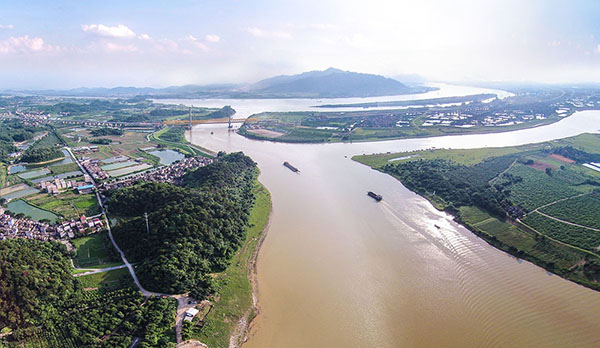latest finds

 techxplore.com
techxplore.com

 techxplore.com
techxplore.com

 phys.org
phys.org

 techxplore.com
techxplore.com

 techxplore.com
techxplore.com

 phys.org
phys.org

 phys.org
phys.org

 phys.org
phys.org

 phys.org
phys.org

 techxplore.com
techxplore.com

 phys.org
phys.org
New fuels

 phys.org
phys.org

 techxplore.com
techxplore.com
oops

 techxplore.com
techxplore.com
Carbon capture

 phys.org
phys.org

 techxplore.com
techxplore.com

 phys.org
phys.org

 phys.org
phys.org

 techxplore.com
techxplore.com

 phys.org
phys.org

 phys.org
phys.org

 phys.org
phys.org

 phys.org
phys.org

 phys.org
phys.org

 phys.org
phys.org

 phys.org
phys.org

 phys.org
phys.org

 phys.org
phys.org

 phys.org
phys.org

 phys.org
phys.org

 phys.org
phys.org

 phys.org
phys.org

Engineers eliminate surface concavities to produce more efficient and stable perovskite solar cells
A research team from the School of Engineering of the Hong Kong University of Science and Technology (HKUST) has shown the existence of surface concavities on individual crystal grains, which are the fundamental building blocks of perovskite thin films, while revealing their significant effects...

A strategy to enhance the stability of perovskite solar cells under reverse bias conditions
If an individual solar cell is shaded and other cells in the same module are not, the sunlit cells can try to drive current through the shaded cell, resulting in an increase in temperature and potential damage to the cells. These conditions put the shadowed cell under a condition known as...

Small steps for electrons—big steps for the future? Ultrafast microscope reveals electron pathways in solar cells
In the search for more efficient and sustainable energy generation methods, a class of materials called metal halide perovskites have shown great promise. In the few years since their discovery, novel solar cells based on these materials have already achieved efficiencies comparable to...

Recycled micro-sized silicon anodes from photovoltaic waste improve lithium-ion battery performance
Researchers from the Qingdao Institute of Bioenergy and Bioprocess Technology (QIBEBT) of the Chinese Academy of Sciences have developed low-cost, micro-sized silicon anodes from recycled photovoltaic waste using a novel electrolyte design.

Unlocking the potential of rust: High-efficiency green hydrogen production from hematite
A research team affiliated with UNIST has made a discovery in developing a novel technology that produces high-efficiency hydrogen using hematite (α-Fe2O3), a form of iron oxide (Fe2O3), which has been exposed to oxygen and water.

Defect engineering leads to designer catalyst for production of green hydrogen
Efficient technology for splitting the hydrogen–oxygen bond in water could be the key to producing low-cost, green hydrogen for energy storage at an industrial scale. Green hydrogen is expected to play a significant role in achieving the U.S. Department of Energy's target of net zero carbon...

Nano-confinement may be key to improving hydrogen production
Researchers at Lawrence Livermore National Laboratory (LLNL) have discovered a new mechanism that can boost the efficiency of hydrogen production through water splitting.

Atomically controlled MXenes enable cost-effective green hydrogen production
A total of 137 countries around the world have signed a "net-zero" climate change agreement to end fossil fuel use and achieve zero carbon emissions by 2050. Hydrogen is being touted as the next green energy source because it emits only water and oxygen when utilized as an energy source.

Producing hydrogen and fertilizer at the same time
A research team from the University Alliance Ruhr, Germany, has found a catalyst that can be used to convert ammonia into the energy carrier hydrogen and the fertilizer precursor nitrite. The production of hydrogen and the production of fertilizer have so far been separate chemical processes.

Machine learning framework maps global rooftop growth for sustainable energy and urban planning
A novel machine learning framework developed by IIASA researchers to estimate global rooftop area growth from 2020 to 2050 can aid in planning sustainable energy systems, urban development, and climate change mitigation, and has potential for significant benefits in emerging economies.

Smart soil can water and feed itself
A newly engineered type of soil can capture water out of thin air to keep plants hydrated and manage controlled release of fertilizer for a constant supply of nutrients.
New fuels

Chemists design novel method for generating sustainable fuel
Chemists have been working to synthesize high-value materials from waste molecules for years. Now, an international collaboration of scientists is exploring ways to use electricity to streamline the process.

Unveiling a new class of synthetic fuels
Researchers from RWTH, the Max Planck Institute for Chemical Energy Conversion, and ETH Zurich have made considerable advancements in synthetic fuels. Their study, which has the potential to revolutionize clean transportation, has been published in Nature Energy, titled "Towards Carbon-Neutral...
oops

Blade collapse, New York launch and New Jersey research show uneven progress of offshore wind
Three events Wednesday highlighted the uneven progress of the offshore wind industry in the Northeast, including the start of a major project in New York, research aimed at preventing environmental damage in New Jersey, and a temporary shutdown of a wind farm in Massachusetts after a broken...
Carbon capture

Material with molecular trapdoor holds promise for highly selective gas adsorption
An international team led by scientists at City University of Hong Kong has found a flexible metal-organic framework (MOF) with one-dimensional channels that acts as a "molecular trapdoor" to selectively adsorb gases, such as carbon dioxide, in response to temperature and pressure changes.

New humidity-driven membrane removes carbon dioxide from the air
Direct air capture was identified as one of the "seven chemical separations to change the world." This is because although carbon dioxide is the main contributor to climate change (we release ~40 billion tons into the atmosphere every year), separating carbon dioxide from air is very challenging...

Scientists replicate enzyme that captures carbon
Scientists from King's College London have recreated the active site of Acetyl-CoA Synthase, an enzyme involved in capturing carbon from the atmosphere. The research, carried out in collaboration with Imperial College London, advances our understanding of this important enzyme, and offers a...

Nano-scale materials that mimic enzymes could convert CO₂ into chemical building blocks
Montana State University researcher James Crawford recently published a collaborative paper with the National Renewable Energy Laboratory that marks a step forward in their quest for what he calls a "holy grail" of chemistry: converting the greenhouse gas carbon dioxide into chemical building...

Scientists bridge the 'valley of death' in carbon capture technologies
A major obstacle for net zero technologies in combating climate change is bridging the gap between fundamental research and its application in the real world.

Bridging the 'valley of death' in carbon capture
Mitigating the effects of climate change has become a major focus worldwide, with countries and international organizations developing various strategies to address the problem. Lowering CO2 emissions is at the top, with carbon capture technologies being a promising way forward.

Electrified membranes with carbon nanotubes offer faster nitrate removal in drinking water
Nitrate contamination in water has long presented threats to the environment and human health. Now, Yale researchers have developed an efficient and effective way to remove it.

Bursting of underwater oil drops: How pollution may remain in water after oil spill cleanups
Oil drops from underwater oil spills can break into tinier droplets at the surface that remain suspended in the water, according to research from the University of Illinois Chicago. That means cleanups after disasters like the Deepwater Horizon spill may be removing less oil from the environment...

Studies explore converting wastewater to fertilizer with fungal treatment
Creating fertilizers from organic waste can help reduce the consumption of fossil fuels and promote sustainable production. One way of doing this is through hydrothermal liquefaction (HTL), which converts biomass into biocrude oil through a high-temperature, high-pressure process.

Scientists unravel transition of survival strategies in grape family
In a study published in Nature Plants, scientists have identified the Eocene, Oligocene, and Miocene boundaries as turning points for the transition of survival strategies in the grape family (Vitaceae).

Ginseng's full genome sequenced
Ginseng's role in traditional medicine is underscored by its complex genetic structure due to its allotetraploid nature. A recent study delves into this complexity, revealing key evolutionary insights into its subgenomes that govern saponin biosynthesis—the primary active compounds in ginseng...

From roots to leaves: The nitrogen connection to photosynthetic efficiency
Photosynthesis efficiency in plants is influenced by the type of nitrogen absorbed. Ammonium (NH4+) and nitrate (NO3-) are the primary nitrogen sources, each affecting plant physiology differently. Variations in leaf anatomy, such as cell wall thickness and chloroplast number, play a crucial...

Discovery of a hybrid lineage offers clues to how trees adapt to climate change
The discovery of a hybrid population of poplar trees in western Wyoming has provided insight into how natural hybridization informs the evolution of many plant species, according to a team led by Penn State researchers. They also said their discovery suggests that genetic exchange between...

Logged forests can still have ecological value—if not pushed too far
Researchers have analyzed data from 127 studies to reveal 'thresholds' for when logged rainforests lose the ability to sustain themselves. The results could widen the scope of which forests are considered 'worth' conserving, but also show how much logging degrades forests beyond the point of no...

Forests endure as carbon sink despite regional pressures, new research reveals
Despite facing regional threats like deforestation and wildfires, the world's forests continue to be a powerful weapon in the fight against climate change. A new study reveals these vital ecosystems have consistently absorbed carbon dioxide for the past three decades, even as disruptions chip...

Diatom surprise could rewrite the global carbon cycle
When it comes to diatoms that live in the ocean, new research suggests that photosynthesis is not the only strategy for accumulating carbon. Instead, these single-celled plankton are also building biomass by feeding directly on organic carbon in wide swaths of the ocean.

Plant research could pave the way for growing crops with seawater
Budding new plant biology research is paving the potential to produce food crops that not only survive but thrive in salty conditions. With salt estimated to affect up to 30% of arable land worldwide—jeopardizing the survival of crops—the salinity crisis is a costly burden on agricultural...

Intensive farming could raise risk of new pandemics, researchers warn
Industrialized farming is often thought to reduce the risk of zoonotic diseases (those transmitted from animals to humans) because of better control, biosecurity and separation of livestock.













































































































































































































